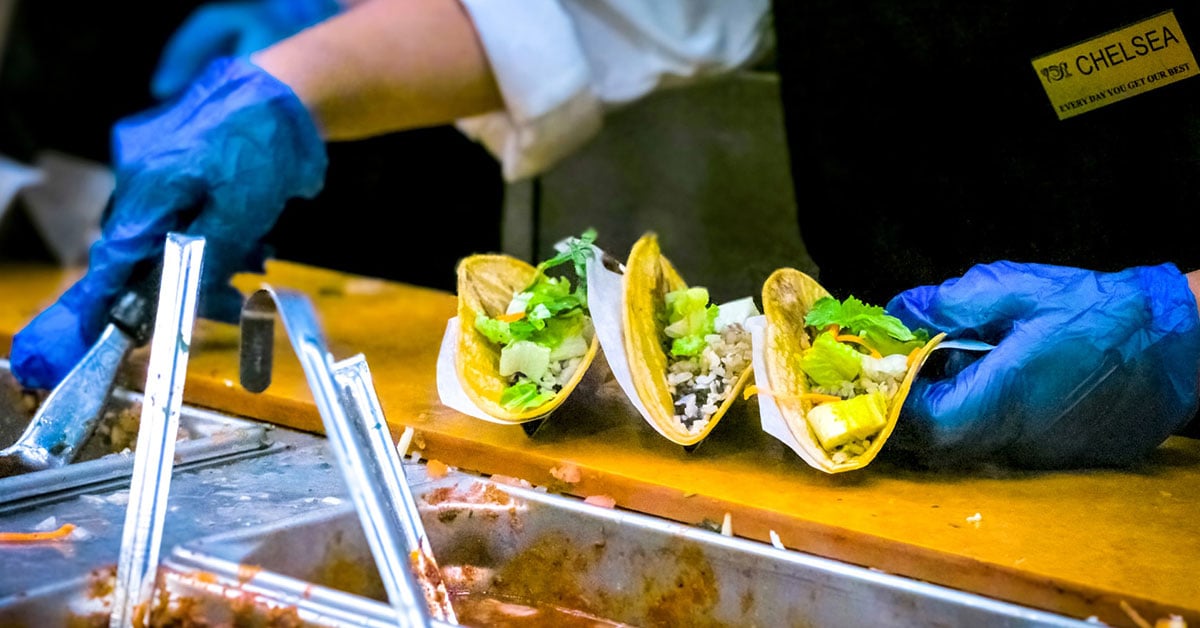Making School Lunches Healthier with IoT Monitoring

In the US, there has been a concerted movement over the last decades to provide healthier food to students. These efforts culminated in the Healthy, Hunger-Free Kids Act (HHFKA) of 2010. This federal law overhauled the standards for school nutrition nationwide. Ten years later, the mandate has been a smashing success. In the years since the government implemented the law, 90% of schools have complied with the new standards leading to:
- A 25% increase in school lunch consumption
- A 16% increase in fruit consumption
- A 23% increase in vegetable consumption
This is undoubtedly a great thing for students nationwide, as better nutrition leads to better educational outcomes. However, to achieve these outcomes, schools must use more fresh produce. Serving fresher produce requires reliable refrigeration infrastructure and ongoing attention to how the inventory is stored and managed.
This is especially challenging on K-12 campuses, where part-time employees and scheduling make it difficult to monitor perishable inventory. Due to this reality, the best way for schools to serve their students fresh and nutritious meals is to implement IoT temperature monitoring platforms such as GlacierGrid. Read on to learn how.
The challenges of making school lunches healthier
While the HHFKA is a success, implementing its standards hasn’t been without challenges. Despite a reported increase in revenue, 90% of districts also reported increased inventory costs to accommodate fresh fruit and vegetable mandates.
The traditional school lunch inventory model relies on a singular vendor to deliver canned and frozen goods to the school on an extended cadence, usually bi-weekly or monthly. The extended intervals allow schools to buy the inventory in bulk, creating a low cost per unit.
Additionally, because processed foods have extended shelf lives, food waste is minimal, and cold storage efficacy is of less importance. Unfortunately, processed foods are less nutritious than fresh items because processing adds additional fats, sugars, and calories to fruits and vegetables.
In contrast, fresh food needs to be continually sourced and requires better cold storage to store more sensitive items. Healthier, fresh food is vulnerable to spoilage when stored within the food safety “danger zone”. This threshold refers to fresh food, such as meat, dairy, vegetables, and fruits, held in temperatures above 40°F for periods of 2 hours or more.
When food is introduced to these conditions, it increases the potential for spoilage which forces educational foodservice teams to discard it or risk causing food-borne illness.
Unfortunately, most schools do not have the equipment they need to store their fresh inventory properly. Nationwide, 88% of school cafeterias need some piece of new equipment to serve safe and healthy meals, with many indicating cold storage equipment as their primary need.
How IoT monitoring helps make school lunches healthier
While federal and state governments work on a plan to distribute better, newer equipment, schools still must figure out how to serve healthy meals with what they have. IoT monitoring systems, such as GlacierGrid, are emerging as one of the top ways to increase longevity and decrease the price of fresh food in educational foodservice.
What is IoT temperature monitoring?
IoT temperature monitoring refers to devices integrated into the internet of things (IoT) that measure temperature and humidity and upload data into the cloud, then interpreted via software.
In practice, cafeteria teams install wireless sensors into walk-ins, lowboys, and freezers. The software then allows you to set parameters that trigger an alert if a temperature excursion occurs, and receive 24/7 coverage for equipment monitoring on nights, weekends, and holidays.
Why is IoT monitoring necessary?
IoT monitoring is essential because it allows unparalleled visibility and the opportunity to take actionable steps that prevent food waste. As cold storage equipment ages, it tends to work less accurately and efficiently. This manifests in frequent breakdowns or temperature excursions.
Without IoT monitoring, the only way to record temperature data in cold storage is through manually conducted audits. However, manually conducted audits are time-consuming, laborious. To gain the maximum benefit, temperature checks need to occur multiple times per day, taking 15 minutes per check on average.
For cafeteria staff aiming to feed hundreds of students in a 30-minute window, this is difficult, if not impossible. Because of these time constraints, staff may rush through them and fail to give them the attention they deserve, resulting in a phenomenon known as pencil whipping.
Therefore, educational foodservice teams may never know their equipment was out of the threshold without accurate data until a walk-in fails and an entire week of inventory spoils.
Learn more about pencil whipping and how to prevent it in our blog post.
Using GlacierGrid to make school lunches healthier
Because the window from exposure to spoilage is so short, cafeteria staff need reliable data to make critical decisions. By utilizing IoT monitoring, K-12 teams can react proactively to temperature excursions and extend the life of their inventory. Therefore, by increasing the longevity of healthy fresh food, schools can continue to serve it to students while keeping an eye on their bottom line.
GlacierGrid’s IoT temperature monitoring analytics platform offers several features geared specifically for K-12, such as:
- Tiered alerting: Set alerts customized by team members and time to ensure the right person gets the correct data.
- Unlimited teams: Make sure that your whole staff can monitor your equipment morning, noon, and night.
- Actionable Reports: Ensure you have the documentation required to comply with both HACCP and NSLP regulations with GlacierGrid’s full suite of reporting capabilities.
Want to see for yourself how GlacierGrid can help you reduce inventory costs in your school cafeteria? Click below to try GlacierGrid today.







